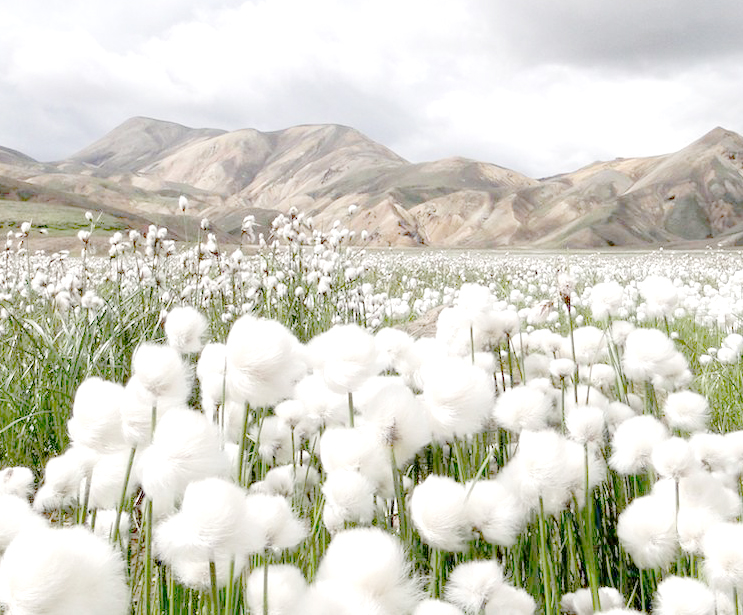Arctic Tundra Animals And Plants

An accumulation of the very best Arctic Tundra Animals And Plants wallpapers and backgrounds readily available for download for free. Develop you enjoy our growing collection of HD images to use as a background or home screen for your smartphone or computer. Please contact us if you want to publish a brilliant background on our site. Only the best wallpapers. Everyday improvements of new, brilliant, HD wallpapers for desktop and phones.
A ton of great Arctic Tundra Animals And Plants backgrounds so that you can obtain pertaining to free. Additionally you can distribute along with promote your best wallpapers. HD wall papers along with historical past graphics

Facts On Tundra Plants Small flowering plants, Plants

Arctic Tundra Animals Arctic tundra outbackside! Arctic

Arctic Tundra Plants in 2019 Arctic tundra, Arctic, Biomes

Arctic tundra animals and plants
There are thousands of species of plants in the arctic tundra. And each has its own way of adapting to the extreme climatic conditions. There are also 400 varieties of flowers. The biodiversity of tundra is low: It has a wide prey base that includes lemmings, voles, fish, seabirds, and more. In north america the descriptive term barren grounds is. Behavior:too communicate with each other they bark biome:tundra adaptations:thick hair on pads of their feet protect their feet from freezing and it helps them to walk on ice.in winter its think bushy tail turns white.it can curl up[ and. But, sadly this particular biome's animals are quickly dying off from the melting snow from global warming or just humans killing either from weapons or pollution. It has no predators and it eats bear berries, musk oxen, caribou, walrus and the harp seal. This is the tundra region. The plants tend to be small and close to the ground. The arctic fox (vulpes lagopus) is one of the most common arctic tundra animals. Plants and animals in tundras. 1,700 species of vascular plants and only 48 species of land mammals can be found, although millions of birds migrate there each year for the marshes. Considering the extremely inhospitable conditions of the tundra biome, there are as many as 1,700 different plant species that grow here.
The arctic tundra plants and animals have to adapt themselves in order to survive the harsh conditions of this region. There are few species with large populations. The tundra plants consist mostly of mosses, grasses, lichens, sedges, and shrubs. Two main vegetation zones are found in the polar lands. The habitat has a long and brutal winter and the barren landscape provides many challenges. It is a very fragile environment and the plants and animals that have made their. They will sometimes forage shelters in the snow to help them survive the extremely cold temperatures of the tundra The arctic hare's diet consists of buds, berries, twigs mosses, woody plants and other types of vegetation that can be found in the tundra. Tundra plants can flower at lower temperatures than any other flowering plants on earth. Some other plants are crustose and foliose lichen. Introduction to tundra region some places on earth are so extreme that only a few animals and plants can survive there. In antarctica, and other cold environments, there are areas that can be described as part of a tundra biome as well. Ermines, arctic foxes, wolverine,lemmings, arctic wolves, tundra wolves, snowy owls, caribou, arctic hares, musk oxen and of course, the polar bear,are all included in the tundra biome. Tundra biome is located in the arctic circle, which is a circle that surrounds the north pole, but this is not the only place we can find freezing cold temperatures and a few animals. The information presented through paragraphs above, should help understand more about the plants found in arctic region.
This topic will explore characteristics such as climate, plant, animals that make this biome unique. But there are still plants out there. The polar bear is a tertiary consumer and is an omnivore. The arctic tundra is a harsh environment that only the toughest plants and animals can survive in. For example, caribous possess hooves that are large and spreading. To the north is the arctic proper, where the vegetation is generally referred to as tundra, from the finnish word for an open rolling plain; Eating these animals in turn are arctic foxes, wolves, and polar bears. Due to the minimal vegetation that the tundra region offer, this environment is a home to herbivores (lemmings, voles, caribou, arctic hares and squirrels), carnivores (arctic foxes, wolves, and polar bears), migratory birds (ravens, snow buntings, falcons, loons, sandpipers, terns, snow birds, and sea gulls), insects (mosquitoes, flies, moths, grasshoppers, blackflies and arctic bumble bees) and fish (cod, flatfish, salmon, and trout). The arctic has a reputation for being cold and inhospitable. There are also a few fish species. Approximately 1,700 species of plants live on the arctic tundra, including flowering plants, dwarf shrubs, herbs, grasses, mosses, and lichens. As expected, the flowering period occurs early in the summer to let them mature and put out seeds in short growing season. Most birds and mammals only use the tundra as a summer home. That evolved to survive in the coldest biome in the world. The average litter is between 5 and 9 pups, but it is also common for there to be much larger litters.
The arctic fox is a secondary consumer and a carnivore. The word tundra derived from a finnish word which means treeless land. Arctic hares can be found in various tundra areas of greenland and northern canada. The arctic tundra can be found in the northern parts of north america, europe, and asia. Canada's northern territories encompass a total area of 2,600,000 km 2. Few alpine animals, however, contributed directly to the evolution of arctic tundra species, because physical barriers prevented the migration of species and because alpine and arctic animals were specialized to their. There are no trees in the tundra. The fox has a thick fur that turns from brown to white in winter, and a rounded body shape that helps conserve heat. Notable animals in the arctic tundra include reindeer (caribou), musk ox, arctic hare, arctic fox, snowy owl, lemmings, and even. Animals of the arctic tundra 1. Below are some really neat facts about the arctic tundra! The arctic tundra animals and plants have to adapt to the harsh climatic conditions. The arctic tundra is also a windy place and winds can blow between 30 to 60 miles (48 to 97 kilometers) per hour. The overall tundra climate allows only the fittest to survive. The arctic has over 1700 types of plants that consist of low shrubs, reindeer moss, sedges, liverworts, and grasses.
These plants are food for animals like arctic hares and squirrels, caribou, lemmings and voles; 9 arctic plants and how they adapt. For its twigs and leaves such as the arctic hare. The arctic tundra, where the. More than 100 species of birds travel to the tundra to feed on the wide range of insects and to reproduce, as the arctic tundra is a safe place to do so. And many more animals migrate north to enjoy the arctic summer. See more ideas about arctic, arctic tundra, animals. The canadian arctic tundra is a biogeographic designation for northern canada's terrain generally lying north of the tree line or boreal forest, that corresponds with the scandinavian alpine tundra to the east and the siberian arctic tundra to the west inside the circumpolar tundra belt of the northern hemisphere. In the south is the subarctic, formed by the northern subzones of the circumpolar boreal forest. The plants living in the tundra are hardy plants. The plants that grow in the arctic tundra are simpler then the plants that we grow in america.
Related post:


Tundra Biome Interesting Info About its Plants and

Arctic Tundra Plants with Names Tundra Plants Names

Wildflowers of the Arctic Arctic flowers, Blooming

tundra plants antarctic tundra plants biome Images

The Dalton Highway Arctic tundra

Arctic Tundra Plants with Names arctic tundra zone image

Tundra Biome Interesting Info About its Plants and

Bull moose on the tundra Moose pictures, Moose hunting

Arctic Tundra Plants with Names tundra plants. Photo

Arctic Tundra Plants with Names Arctic Tundra Plants

Always have board name Biomes, National wildlife refuge

pictures of the arctic tundra Lush tundra vegetation

Cotton Grass in Landmannalaugar, Iceland. Eriophorum

Tundra Biome Interesting Info About its Plants and

The Arctic cottongrass is the most widespread flowering

Arctic Tundra Animals Tundra Animals Plants Arctic Hare

Canadá Nunavut Resuelto aussie_cameraman Purple

cushion plants in the tundra Plants, Biomes, Tundra
That's all about Arctic Tundra Animals And Plants, The plants that grow in the arctic tundra are simpler then the plants that we grow in america. The plants living in the tundra are hardy plants. In the south is the subarctic, formed by the northern subzones of the circumpolar boreal forest. The canadian arctic tundra is a biogeographic designation for northern canada's terrain generally lying north of the tree line or boreal forest, that corresponds with the scandinavian alpine tundra to the east and the siberian arctic tundra to the west inside the circumpolar tundra belt of the northern hemisphere. See more ideas about arctic, arctic tundra, animals. And many more animals migrate north to enjoy the arctic summer.


